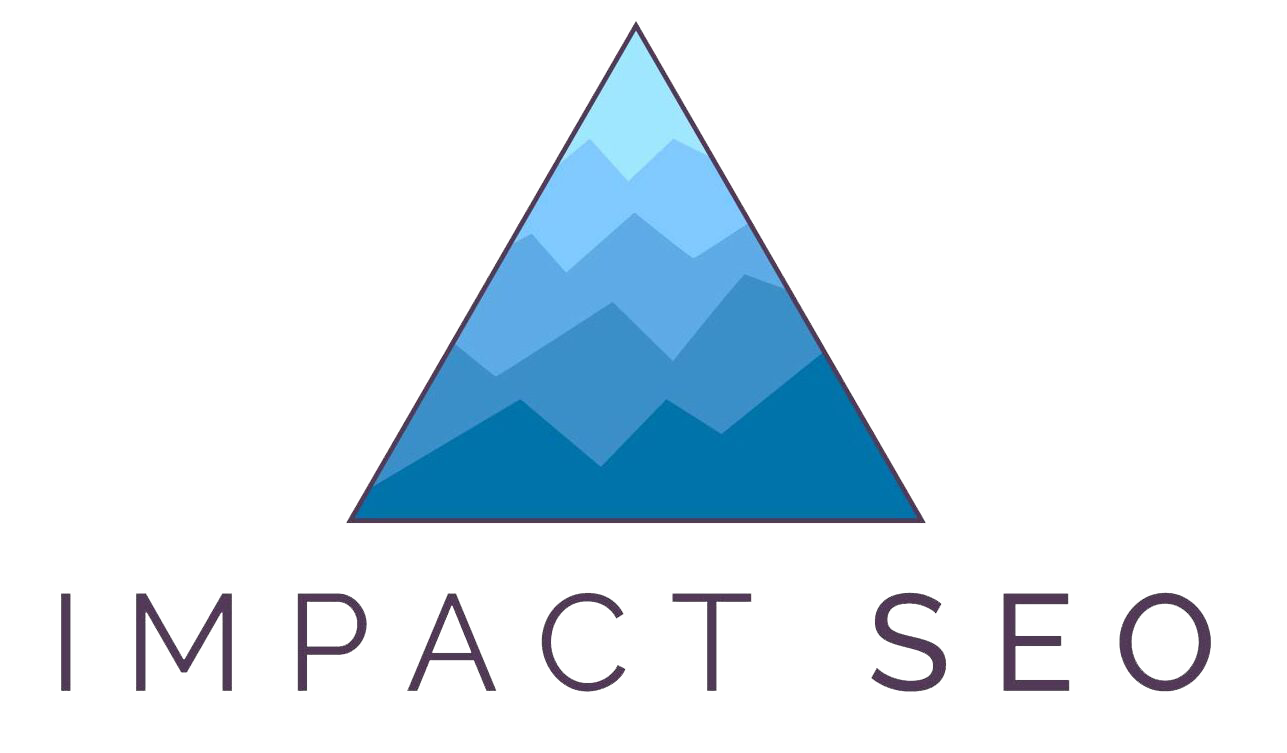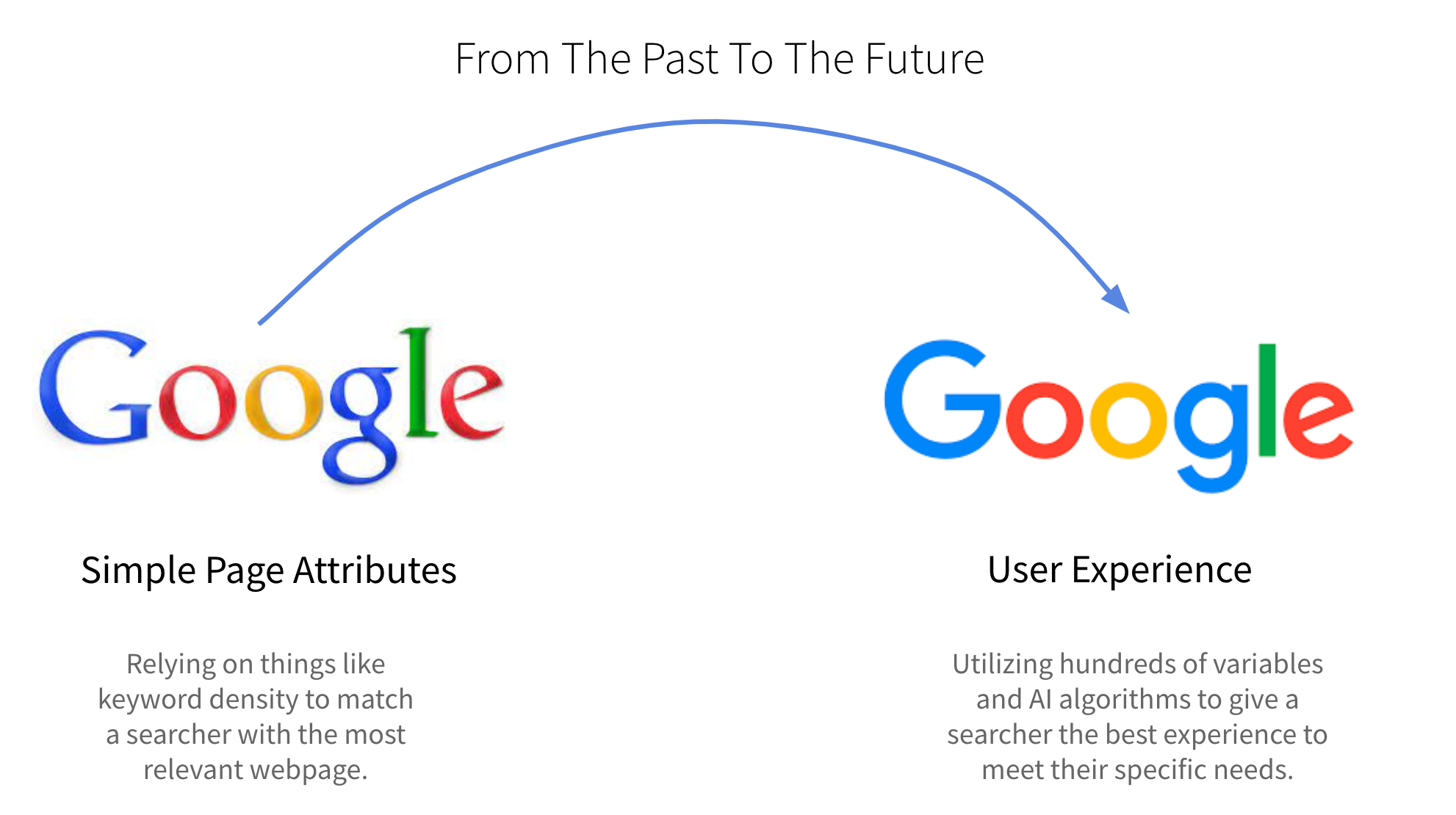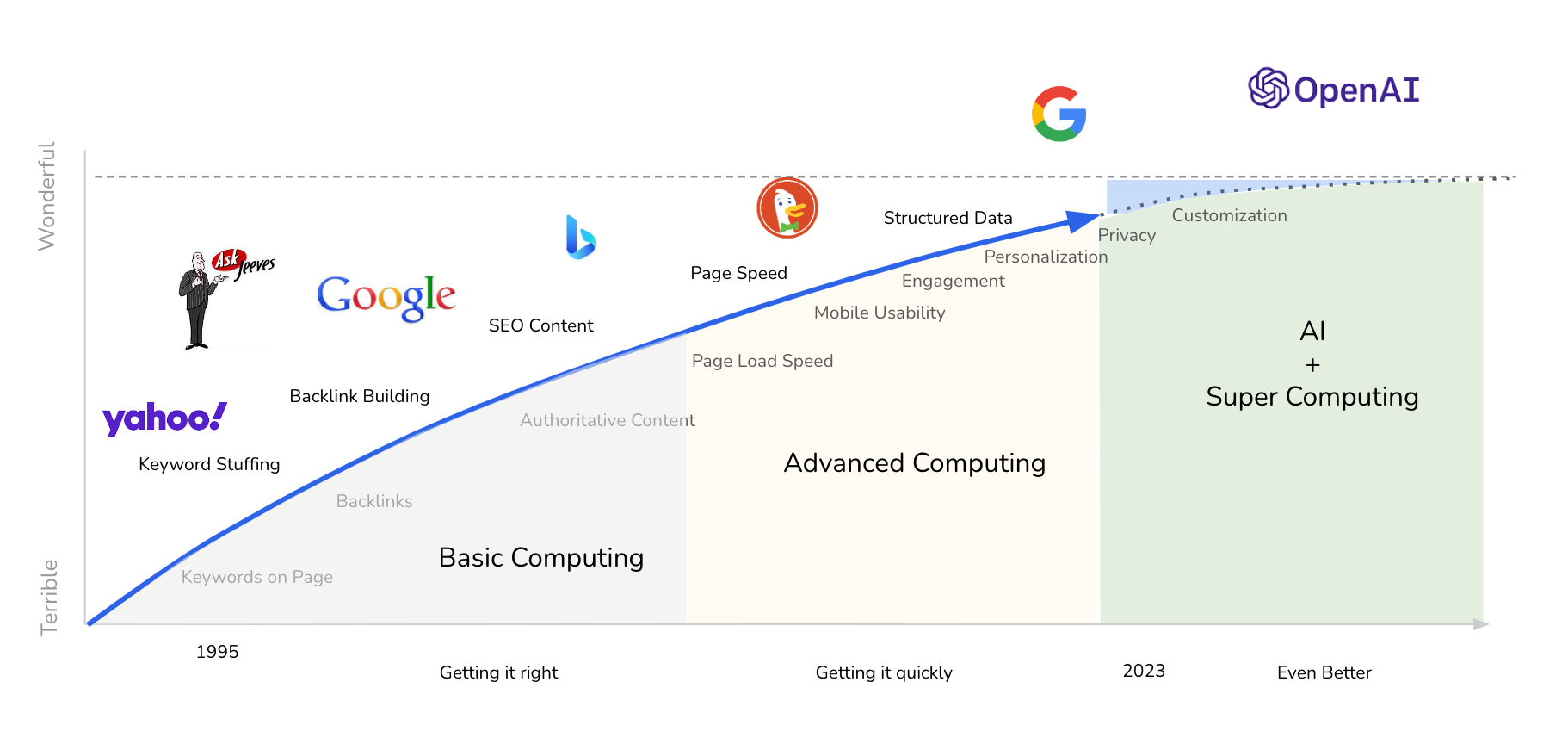The same thing that makes a wizard great for entertainment makes them terrible for SEO. Their tricks mystify us precisely because we have no idea how they work. Most marketers don’t want a mystery. We want a replicable methodology we can scale and apply to our next venture.
I wrote this short explainer to help demystify the relationship between content and SEO. I’ve designed it to help my clients:
- Stop wasting time creating the wrong content
- Greatly increase their ROI on the content they do create
- Simplify their content planning process
Our Goals: Connecting Content To Growth
The type of growth shown in this chart is real and attainable in just about every niche. Even new websites entering into an established market can find a foothold and boost growth when following the right methodology.
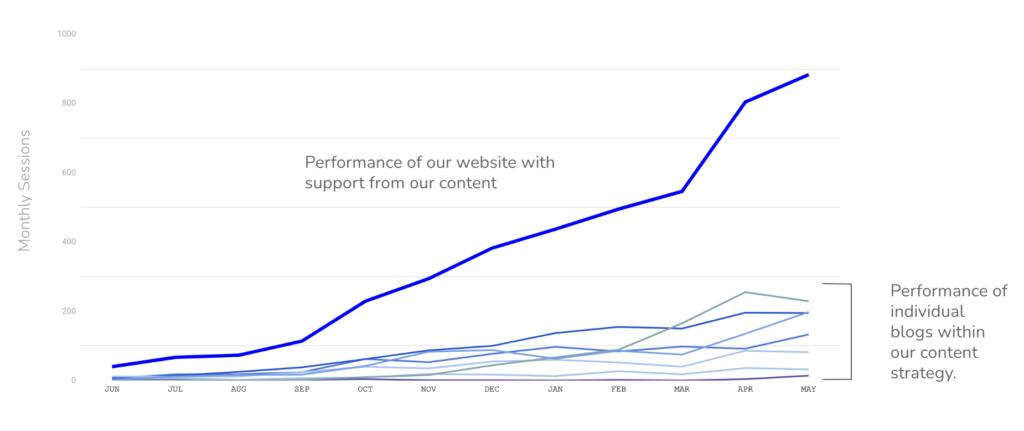
Why Do We Create Content?
I’ve worked with a variety of organizations and they all have the same core goal. Whether it’s a multi-million dollar B2B corporation, a small ecommerce business, or a local nonprofit… we all want to see growth. We invest in SEO so we can reach more of the right people, who will support our cause (with their time, attention, or money), which allows us to keep doing what we’re doing.
Our Underlying Goal: Growth
To stay on course as we build out content, we need to remember our 1st guiding principle: Keep The End In Mind. Supporting milestones and metrics are important… but if we get too caught up in keywords, search volumes, and competition scores we can lose sight of the big picture and jeopardize our growth trajectory.
As you build and execute your content strategy stay focused on your underlying goal and use supporting goals as indicators that you’re on the right path.
Supporting Goals (Metrics / Indicators / Milestones):
- Better keyword rankings
- More site traffic
- More leads and sales
- The Role of Content in Growth
Content on your website is simply a means of communicating information to your target audience. Effective information helps educate your potential customers and moves them along the buyer’s journey.
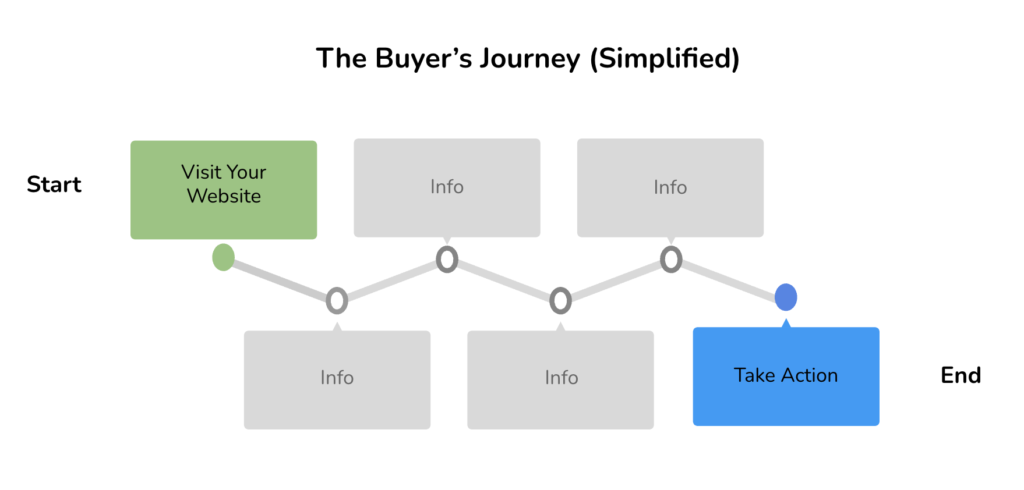
This highly simplified version of the buyer’s journey shows the multiple touchpoints your target audience will likely have as they gather the information they need from your website before making an informed decision to take action.
Our website visitors (potential customers) come to us looking for answers. A content marketer’s job is to understand what questions they’re asking and how to communicate the answers clearly.
Good content makes for a smooth buyer’s journey.
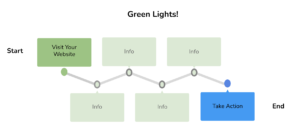
Good content = green lights
If you have gaps (missing content) or roadblocks (content that doesn’t communicate information well), you make it hard for your target audience to get the info they need.
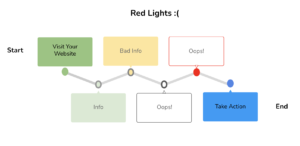
Bad content or missing content = red lights
Don’t deprive your potential customers of the information they’re looking for.
Optimize Content for User Experience
The way users interact with your website is determined by the relevance and quality of information you provide. This is called user experience. It’s the basis for key metrics like engagement and conversions, and is how we measure success.
Search engines like Google seek to provide the best experience for their users by connecting the searcher with the best possible content to answer their query.
The better your content, the more likely a search engine will connect you with searchers on their platform.
Key Takeaway: The right content makes the buyer’s journey smooth and easy which results in better engagement, higher conversions, and better rankings in search results.
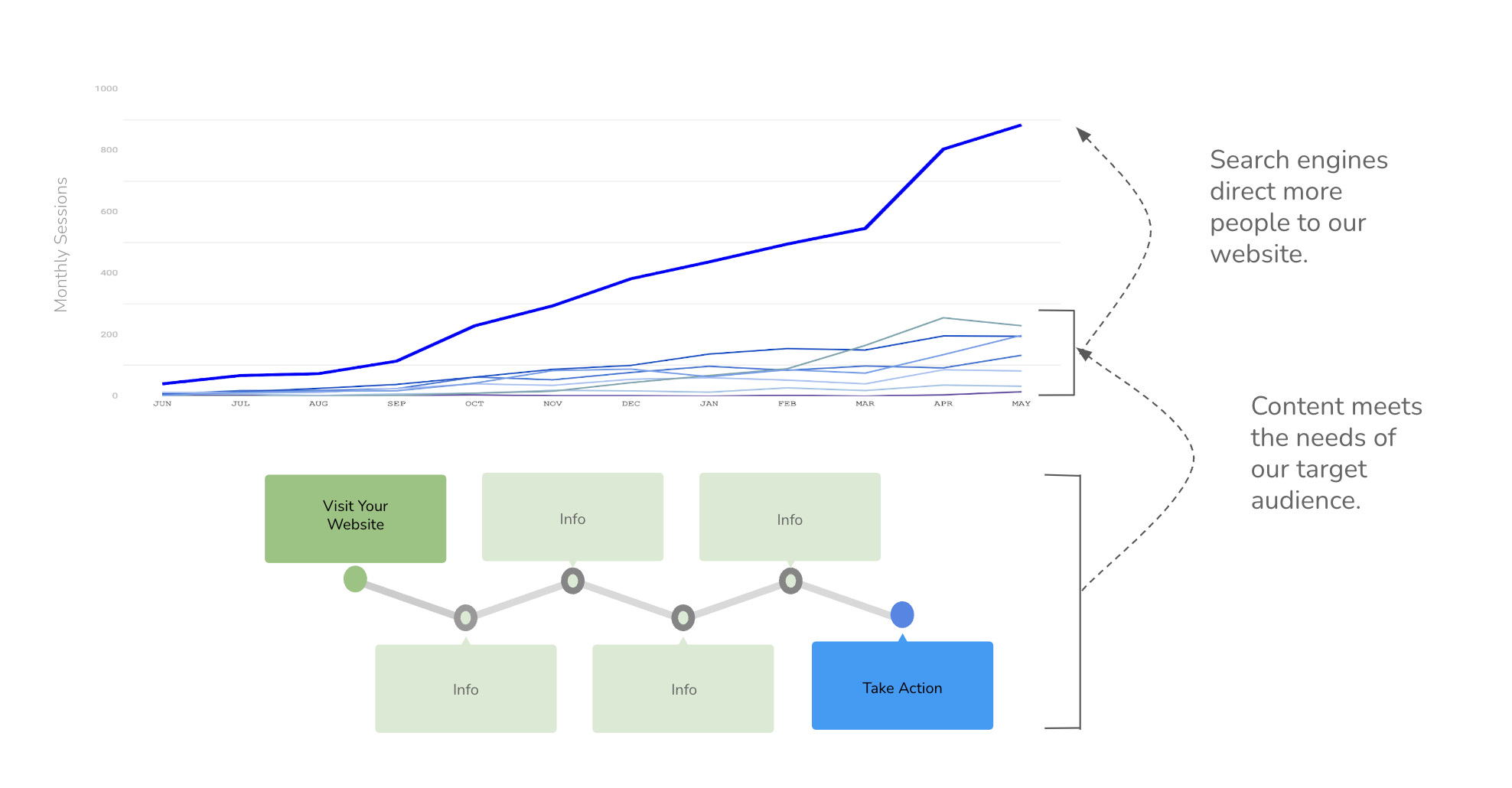
When we help our target audience, search engines help us.
How do we build the right content for a seamless journey for our target audience? We follow the 3M framework.
The 3 M’s of Effective Content
The 3 M’s are a simple set of rules that help us find and stay in the sweet spot of content creation for our target audience.
M1: Mindset – Download Update 2.1.0
If you’re running on the SEO mindset version 2.0 or earlier your system is at risk!
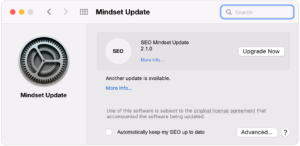
Let’s get clear on the difference between the old school SEO mindset (V 2.0 and earlier) vs the new school, sustainable growth mindset.
The Old SEO Mindset
People working with an outdated SEO mindset believe they just need to create “SEO blog content” around “the right keywords” and they will magically rise to the top of Google. This strategy hasn’t worked for decades and is a recipe for disaster.
If there’s one thing I want you to take away from this lesson, it’s to stop thinking about web pages and blog posts as “SEO Content”. The pervasive misbelief of content for the sake of content is causing otherwise savvy marketers to waste valuable time and money. The SEO 2.0 mindset steers us away from the needs of our target audience and pushes us out of sync with Google’s mission.
Time for an update.
The Sustainable SEO Mindset
The modern SEO mindset shifts the emphasis away from content and search engines, and toward the needs of our target audience. Instead of creating blog posts we think the search engine wants to see, we communicate information we know our target audience is seeking.
Updating our mindset puts us back in alignment with both our target audience and search engines like Google. This is the core principle of sustainable SEO that drives the success of our strategies and gives us peace of mind that we’re making a good investment.
Let’s compare the two mindsets:

History is good for learning lessons but – especially when it comes to SEO – don’t expect that what worked in the past will work in the future. It’s time to update our beliefs about how search engines work and how we want to leverage them to reach our target audience.
Key takeaways for an updated SEO mindset:
- Don’t assume you need more blog posts because you think it’s good for SEO
- Before doing keyword research, connect with your customers to see what information they need and if you can, figure out how they are searching for that info
- Think past the first click. Don’t focus solely on what content will drive clicks to your site. Remember your site visitors are humans and while they may enter your site looking for an answer to one question, they probably have more. Do you have answers for them? Or are you trying to push them straight to your sales page?
- Focus less on “SEO page metrics” like keyword density and more on clear communication of ideas, concepts, and answers.
- More copy doesn’t equal better rankings.
How do we apply the new SEO mindset to our website content?
M2: Methodology: Follow A Process That Works
Here’s how to stay aligned with our guiding principles for sustainable SEO as we build out a winning content strategy.
In Theory: we have a framework that helps us identify what information our target audience is looking for and a process for delivering that information effectively. Then we let search engines do what they do best, which is connect their searchers with the best possible information.
In Practice: we follow these steps to help us create effective content:
- Outline our TA’s needs for this topic
- Define the scope of the topic we’ll be covering
- Evaluate our competitors
- Wireframe our content
- Create
- Polish
- Publish
Before You Start: Select a topic you know or have good reason to believe your TA is interested in. If you don’t already have a good idea for what your target audience needs, see our guide on building a marketing foundation before proceeding.
Outlining TA’s Needs for A Topic
The goal of this step is to map out the most accurate buyer’s journey possible. Focus on 1 topic for 1 specific target audience before moving to the next.
Brainstorm all possible sub-topics, then validate these ideas through research.
Tips for Research: Start with an open mind. Look through any forms of communication with your TA that you have available to you. This might be:
- FAQs submitted on your site, asked at a conference, or posted on Quora
- Discussion topics on a popular forum or Facebook group in your industry
- Interests or questions people on your team have heard from your customers
End your outlining process with keyword research. This will help you connect specific topics your target audience is interested in with actual search queries.
Then make sure you don’t set parameters for yourself.
Defining Scope
We define scope to help find the sweet spot between too broad and too specific.
A key aspect of meeting our TA’s needs is catering to specific topics they’re interested in and having more detail than competitors. We’re trying to “scratch the itch” of their curiosity better than any competing websites. To do this we need to get specific and know how to draw the line between where one topic ends and another topic starts. If we clump them all together we risk being too broad, vague, or shallow… and not providing any value.
Ask yourself the following questions to help delineate between topics:
- Would the various segments of my audience need different types of information for this topic? If yes, this calls for distinct pieces of content.
- How hard will it be to thoroughly cover this topic? If we’re not able to thoroughly cover the topic with 2,000 words or less, we most likely need to break the topic up into more specific sub-topics.
- Can we provide the best resource on this topic? If not, get more specific.
Evaluating Competitors
If we consistently communicate information to our target audience better than our competitors, we will rise above them. For every topic you create content for, evaluate what your competitors have and try to find multiple ways to make your resource significantly better than theirs.
Focus on the things that make your content convey key points more clearly than your competitors. This often means writing clearer, providing diagrams to drive home key points, or integrating video to make a concept easier to understand.
Wireframing Content
Whether you create an outline, sketch, or even just rough notes, starting with structure is a helpful way to make sure you hit the main points of communication. I like to have simple outlines when I’m writing because if I don’t, I tend to get lost in the details and one thread can steer the whole piece off topic. I also recommend having a check-in midway and before your final review to ensure you’ve hit the most important points your TA is looking for.
Content Creation
Well… not much to say here! Take your time and do it right.
Polishing
Getting the final touches right often makes the difference between a great resource vs and okay resource. In a winner-takes-all system like Google search where the first result gets almost all the clicks, I suggest swinging for the fences.
Your website visitors will notice the difference between a finely tuned blog post and one that makes good points but is a little sloppy. How does that reflect back on the type of work your organization does?
This also translates back to how well you will rank for that content. Google wants to present its users with the best of the best… 100% content… not 92% content.
If you take the extra time to get it right, you’ll make a better impression on your site visitors and search engines.
Publishing
My only recommendation here is to strike a healthy balance between polishing and publishing. Be careful not to be so much of a perfectionist that you don’t publish. Being a first mover on a topic is one of the biggest advantages in SEO.
M3: Materials – Leverage The Right Materials
A powerful rocket won’t make it off the ground without the right launchpad. We set ourselves up for success by starting off with a stable foundation.
At a minimum we should know:
- Who our target audience is
- What segments within our target audience exist
- What motivates them
- What core problems and subproblems exist throughout their buyer’s journey
In addition, we need to be clear on the solutions our organization can provide and the best way to position them for each segment of our audience.
All of this information can be defined in 3 simple foundational materials:
- The Product Brief
- The Target Audience Brief
- A Prioritized Keyword List
These are all defined here: Guide To Building A Foundation
Staying Current
Foundation materials are not static. As we learn more about our target audience or our solution pivots, we need to update our foundational materials which will guide updates to the information on our website.
The most successful SEO strategies start with research, flow through publishing, and always circle back for updates and improvements.
Taking Form: Communicating Through Our Website
Following the 3M’s puts us on a sustainable growth trajectory by keeping us aligned with the needs of our target audience and the goals of search engines like Google. That’s how we get results like these:
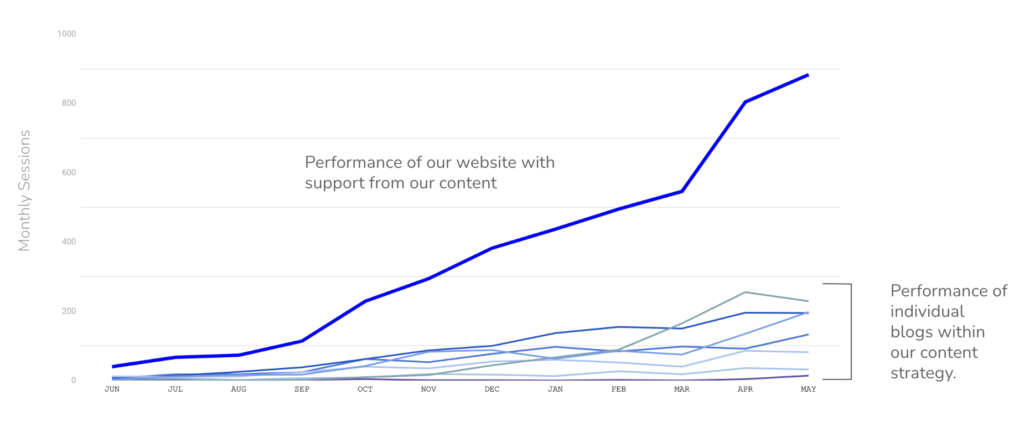
Bonus: The principles outlined here will help improve other areas of your communications too. “Content” is going to range from sales pages through to blog posts, social media posts, and event print materials. Every public-facing material your brand publishes fits into the buyer’s journey is a part of your growth strategy.
I hope you can have fun creating! And, if you have questions leave us a comment. We’ll be circling back to update and improve this blog post as we hear from our readers.
